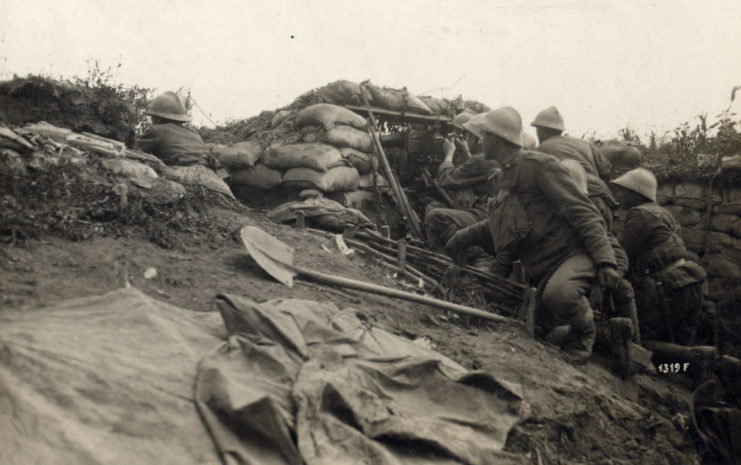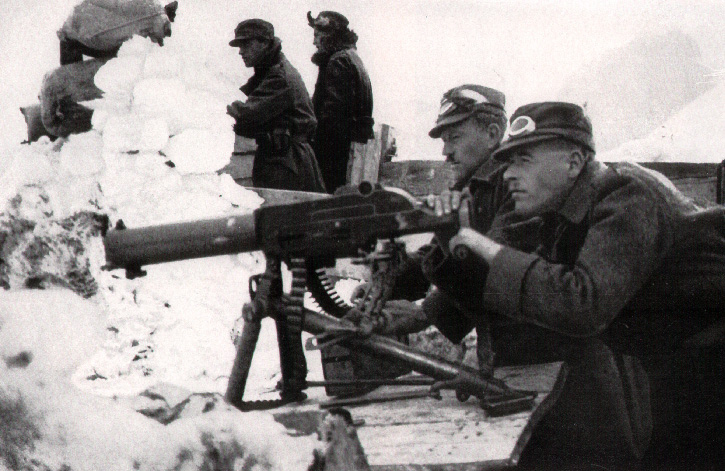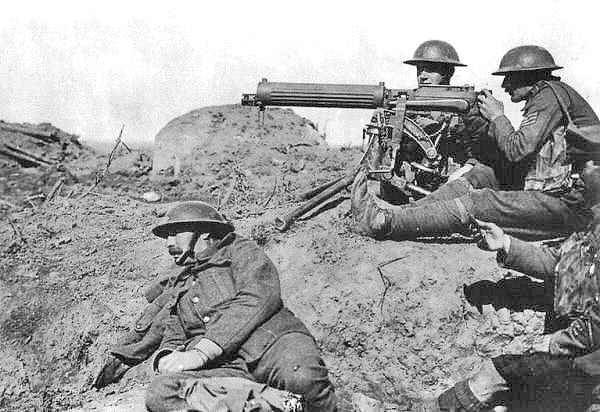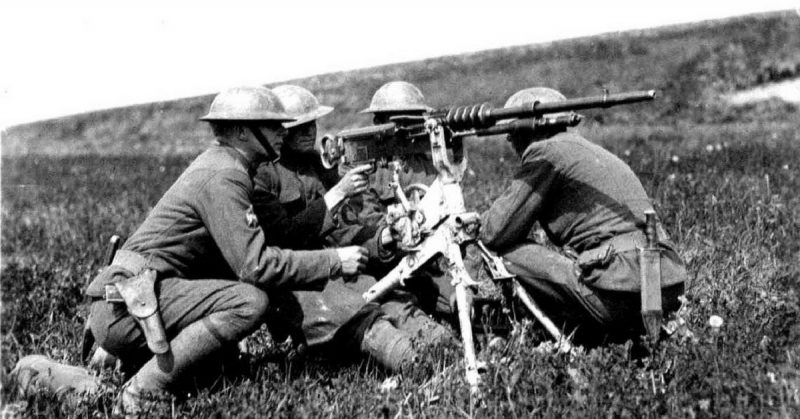The machine-gun was possibly the most valuable weapon in defining the fighting of WWI. Its massive firepower devastated infantry formations and virtually eradicated the use of cavalry. It was one of the weapons that forced both sides into deeply dug defensive positions on the Western Front, leading to four years of virtually static warfare.
It was also a weapon that, when properly used, helped to break the deadlock in 1918.
Here are four ways that machine-guns were deployed during the war.
The Defensive Nest
The most prominent and effective use of machine-guns was in defensive positions.
All along the trench lines, machine-gun teams dug in, protecting themselves with defensive nests. Like the rest of the lines, they were dug out of the dirt and reinforced with sandbags or whatever other materials could be found. Sheltering behind a solid mass of earth, troops were protected from the direct fire of their enemies.
Careful positioning of machine-gun nests allowed a small number of guns to protect a relatively large part of the line. Enfilading fire let them defend each other against an enemy assault. As infantry advanced, the machine-guns opened fire. They had a devastating effect on soldiers crossing the exposed ground of no man’s land. If they got bogged down in the shell-torn and muddy ground or tangled in dense patches of barbed wire, they were sitting ducks.
Inevitably, machine-gun positions became prime targets for the bombardments that preceded an assault although it was seldom enough to counter their effect. As long as a few nests survived, their troops emerged from cover, man their guns, and unleash their hail of death.

Static Support for an Advance
The machine-guns in use at the start of the war were too heavy and cumbersome to be carried and fired by advancing troops.
It was not just the guns themselves. To function they needed tripods for stability, water for cooling, barrels to replace those worn out by heavy fire, and massive quantities of ammunition. Carrying everything during an assault was impossible.
The armies found ways to use heavy machine-guns to support advances. Gunners were trained to fire over the heads of their own infantry, relying on gravity for the bullets to reach the enemy. It was of little comfort to the troops who worried that a stray round might hit them in the back.
Such supporting fire was most effective when concentrated and well planned. An exemplary case was the work of the British 100th Machine-Gun Company at High Wood during the Battle of the Somme.
On August 24, 1916, an infantry attack was launched in High Wood. It was supported by the Company’s ten Vickers machine-guns. Before the offensive, the guns had been strategically placed in the Savoy Trench. The soldiers were given pre-determined targets, each one chosen to support the infantry in their advance and to prevent a German counter-attack. Two companies of infantry were used to supply enough ammunition for the guns.
As the attack began, the Vickers guns opened fire. They continued firing for the next twelve hours. Every hour, the barrels were changed due to the wear and tear of constant use. Loaders and gunners were replaced throughout the day. The ten guns fired nearly a million rounds.
With such firepower, in the right circumstances, the machine-gun could be a useful offensive weapon.

Countering Counter-Attacks
Remaining back during initial assaults, machine-guns were moved forward during the follow-up action.
Having taken a trench line, troops hastily tried to secure it. They were at their most vulnerable immediately after an attack, while the defenses still faced back toward their own lines. Hurried adjustments were made, shifting firing steps and defensive works to confront the enemy. During that time and until they were connected to their own side’s defensive network, they were vulnerable to counter-attack.
Just as machine-guns were deadly in preventing an attack, they could effectively halt a counter-attack. Once enemy lines had been taken, the machine-guns were hurried forward. It was easier with lighter machine-guns, but once a position was secured, heavy machine-guns could also move up. They then provided the cover needed while infantry settled in and rebuilt the captured defenses.

Storm Troops
The introduction of light machine-guns in the middle of the war allowed them to be carried in an assault. Troops advanced in a series of short rushes, each unit in turn advancing, taking cover, and then providing covering fire for the next.
The Germans took the tactic to its powerful conclusion with their Sturmtruppen or storm troopers. Instead of providing light machine-guns to support all infantry units, they concentrated them in elite groups. The storm troopers were also equipped with plentiful hand grenades. The concentrated power of both weapons enabled storm troopers to punch through Allied lines during the spring offensives of 1918.
The innovation did not stop with concentrating the destructive power in those units. Instead of seizing enemy trenches and stopping to hold ground, they broke through and continued moving into their enemy’s vulnerable rear. Their firepower sent rear line units reeling, forcing the enemy to pull back. Meanwhile, follow-up formations occupied the ground the stormtroopers had taken.
The new machine-gun-based tactics turned the war back into one of movement. For three years, machine-guns had ensured static battles. In the final months, they brought movement back.
Sources:
Christopher Chant (1986), The New Encyclopedia of Handguns
Ian Westwell (2008), World War I
